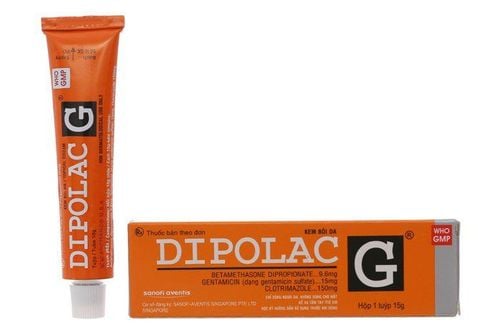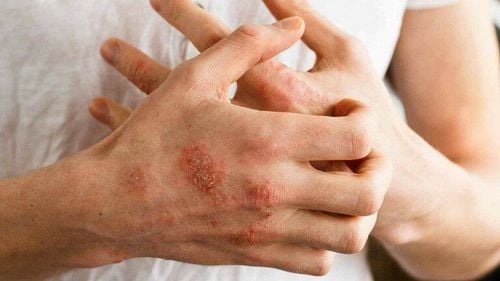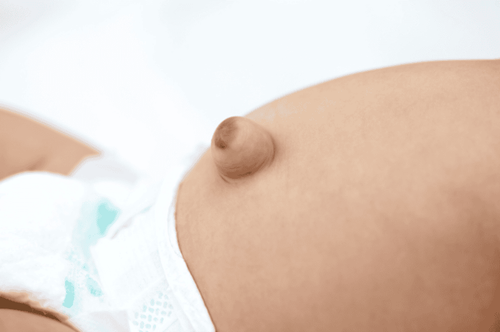This is an automatically translated article.
The article was professionally consulted with Specialist Doctor II Cao Thi Thanh - Pediatrician - Pediatrics - Neonatology - Vinmec Hai Phong International General Hospital.Skin infections in infants are one of the most common skin diseases in children but are difficult to treat definitively. Recognizing skin infections in babies plays an extremely important role in protecting the health of children.
1. What are skin infections in babies?
Skin infection or dermatitis in babies is a fairly general term to describe the skin's response to external agents common in children. According to statistics, inflammatory skin diseases in babies are often diseases directly related to atopic dermatitis.Skin infections in babies, if you know how to treat and take good care of skin infections in babies, they can go away on their own, but if you don't treat them properly, they can cause serious complications and quite dangerous complications.
Trắc nghiệm: các chỉ số cần chú ý về sự phát triển thể chất của trẻ
Chiều cao, cân nặng của bé ở từng giai đoạn nên là bao nhiêu là bình thường, bao nhiêu là bất thường? Cùng ThS.BS Ma Văn Thấm điểm lại xem bạn đã nắm được các chỉ số phát triển thể chất của bé chưa nhé!The following content is prepared under supervision of Thạc sĩ, Bác sĩ y khoa, Ma Văn Thấm , Nhi , Phòng khám Đa khoa Quốc tế Vinmec Dương Đông(Phú Quốc)
2. Types of dermatitis in babies
2.1. Newborns with pyoderma Pyoderma is a very common form of infantile dermatitis that often occurs in infants and young children. Dermatitis in babies develops most strongly in the summer, when the baby's body secretes a lot of sweat, creating a favorable treatment for bacteria and viruses that cause disease to develop. Newborns have pyoderma. There will be clusters of pustules on the skin, or recurrences, causing damage to the baby's skin.
2.2. Baby Atopic Dermatitis Atopic dermatitis in children or eczema is an inflammatory skin condition in babies that causes a red rash that usually appears in babies and children under 5 years old.Eczema often appears on the skin. on the scalp and on the face of infants, but sometimes it appears on other areas of the body as well. It is estimated that about 20% of babies have atopic eczema, 65% arise in the period before 1 year of age. Allergic infant dermatitis causes dry, flaky, sometimes scaly skin that can appear as tiny red bumps. These blisters burst with water when scratched or scratched. Atopic dermatitis in babies often appears and then goes away on its own without treatment, but due to the symptoms it causes along with itching, it is very uncomfortable for babies.
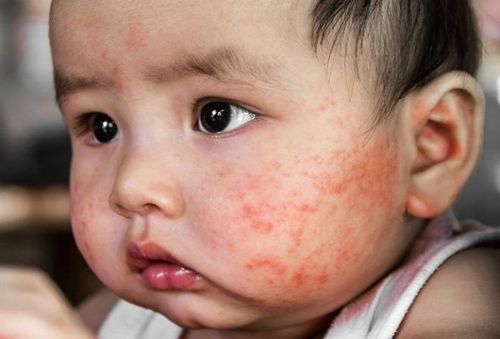
2.3. Newborn Atopic Dermatitis Neonatal Atopic Dermatitis is a chronic progressive disease that occurs in children with a family history of allergic diseases such as allergic sinusitis. reactions, urticaria. asthma....
2.4. Newborns with scalp inflammation Seborrheic dermatitis: (Seborrheic dermatitis) is also a chronic skin disease, due to the effect of androgens (hormones that stimulate sebaceous gland activity) from the mother to the placenta. Many children get sick.
2.5. Newborns with atopic dermatitis Dermatitis in babies with atopic eczema (or atopic dermatitis) is a chronic, itchy, flare-up of the skin disease. It is a complex multifactorial disease that causes two abnormalities:
Defect in the skin barrier (due to lack of filaggrin), which causes the skin to become abnormally dry and sensitive to the skin. with all kinds of irritation. Tendency to sensitize to IgE allergens, causing an overactive immune response. 2.6. Dermatitis in babies Face dermatitis in babies is one of the skin diseases that are easy to encounter in children but difficult to treat definitively. The characteristic of the disease is easy to occur in the summer, when the weather is hot, the child's skin sweat a lot, making the skin wet and moist. At this time, the baby's skin is very susceptible to bacteria entering and causing inflammation on the skin.
Usually, facial dermatitis in babies is not dangerous but makes the baby uncomfortable, or fussy. Parents should also not be subjective in the treatment of inflammatory skin diseases in babies to avoid long-term effects on the baby.
3. Signs of dermatitis in babies
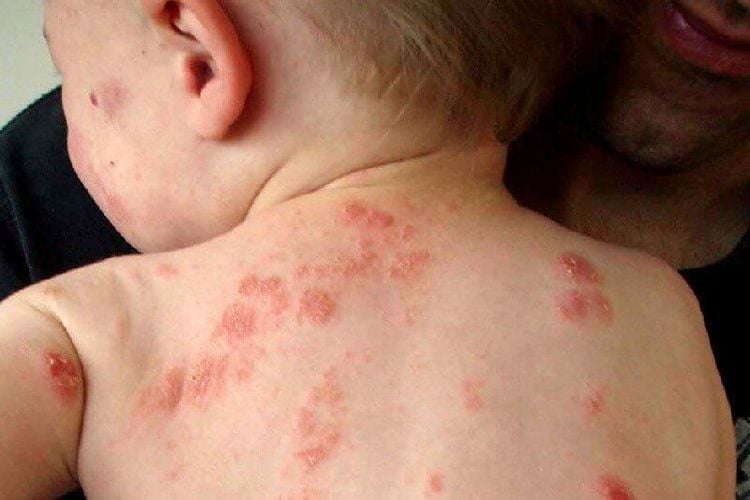
Acute stage: The blisters gather in clusters on the surface of the skin red, edematous, watery, itchy. Subacute stage: The skin lesions are less edematous, begin to dry and itch less. Chronic stage: Stomach, scabs, lichenification, still itching. In the case of infantile dermatitis, if not treated well, it can lead to superinfection, pus, burning pain, sores anywhere on the body if damaged.
When skin infections in infants can cause cerebral thrombophlebitis and leave sequelae that are difficult to overcome. Inflammatory skin disease in babies, if not treated early, is likely to not go away on its own, but leave severe sequelae due to inflammatory lesions in the face, head, and neck - where many blood vessels are concentrated, near the nervous system. .
At Vinmec International General Hospital, there is a package of examination and advice on treatment of atopic dermatitis to help customers assess the overall condition of the disease and advise on measures to help prevent recurrence.
When registering for a package of examination and consultation for treatment of atopic dermatitis, customers will receive: Dermatology specialist examination. Perform tests such as: quantitative IgE, fresh mycobacteria, specific IgE quantification with respiratory allergens - food (Panel 1 Viet), test Rida Allergy Screen (panel 1)...
Please dial HOTLINE for more information or register for an appointment HERE. Download MyVinmec app to make appointments faster and to manage your bookings easily.








